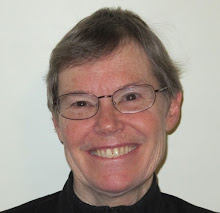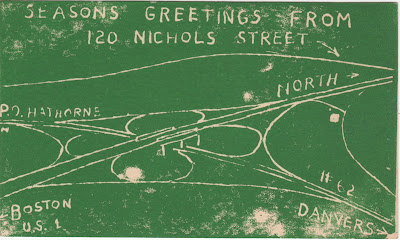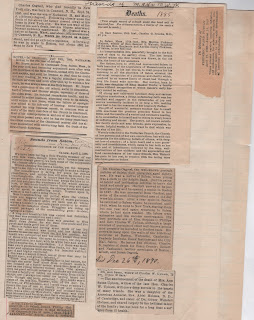On April 15, 1880, my great-great grandmother crossed the threshold from life to death.
I know this because I’ve been reading my cousin’s written history of the family, including quotes from diaries kept then by various family members. For weeks now I have been slowly making my way from the 1850’s to the 1880’s. From the diary entries I am catching glimpses of life in a different age, daily details of goings and comings in Danvers and Salem – a time of horse cars, frequent trains, and prompt postal service, without telephones or indoor plumbing.
All the writers of those diaries have died, of course. They are ancestors and relatives of ancestors, old names that floated in the air of family storytelling during my youth, when I wasn’t paying much attention. Now I’m learning who was who and the conditions under which they lived, so long ago. But this week, as I turned a page into 1880, the long-ago past suddenly felt closer.
A new voice had entered the story. A 10-year-old girl in Danvers was writing in her very first diary. She’s my great Aunt May, a person I really knew. I remember her clearly, as her life overlapped mine for two decades (1940’s -1960’s) and she lived at Pine Knoll, not far from our home.
On January 1st, 1880, May wrote, “went to school all day mamma went to Salem”. On January 2nd, “went to school all day papa went to the plains in the afternoon.”
By that spring she was aware that her grandmother Nichols, who lived in Salem, was very ill. One day in April she wrote, “Grandma died at 9 o clock.” On April 17, she wrote, “Saturday. ... I saw Grandma I and Josh and John went to the funeral it was first funeral I went to.”
Aunt May lived 96 years (1870-1966) and I attended her funeral, which was held in the parlor of Pine Knoll. It was my first experience of a home-based funeral. Aunt May had been born in an upper bedroom in that same house, and I recall visiting her there near the end of her life, as she lay quietly in her bedroom. So many memories and connections! It was Aunt May who lent my mother the antique “Nichols veil” that adorned my head as I married Peter Ward in 1965. Comments were made then about the curious fact that I was a Nichols bride marrying a Ward, whereas the original bride wearing that veil in 1833 was a Ward marrying a Nichols!
My cousin Janet Nichols Derouin, the author of the book draft I am now reading, arranged that veil on my head, turning me into a beautiful bride as I crossed a threshold to marriage. I did not know much then about the first bride, Mary Holyoke Ward, who was marrying Dr. Andrew Nichols. Now, from her diaries and Janet’s history, I have much information about her life, and know that she lived until April 15, 1880, dying in her home with many family and friends attending to her needs in her final days. Her daughter’s diary entry for April 15 brings us to the scene: “Mother had a very quiet night & very feeble this morn, but bright & quiet in the afternoon. Said over & over ‘It isn't possible it is all over.’ Grew very sick about four o'clock & grew sicker, or rather was dying & drew her last breath at 20 minutes of nine in the eve. Her breath grew shorter & shorter & then stopped without a struggle.”
In the days before she died, she requested that family members read specific poems or hymns. On April 4 she requested, “The Dead are like Stars by Day,” which begins with this stanza:
The dead are like the stars by day,
Withdrawn from mortal eye,
Yet holding unperceived their way
Through the unclouded sky.
--------------------------
[Note: I wrote this Remembering Danvers piece 2/24/18 and submitted it to the Danvers Herald 2/27/18. It was published in the March 15 print edition, but not posted online for a while. I've corrected one name, and added the specific date of my great-great-grandmother's death. This blog post will appear on April 15, the anniversary of her death.]


































